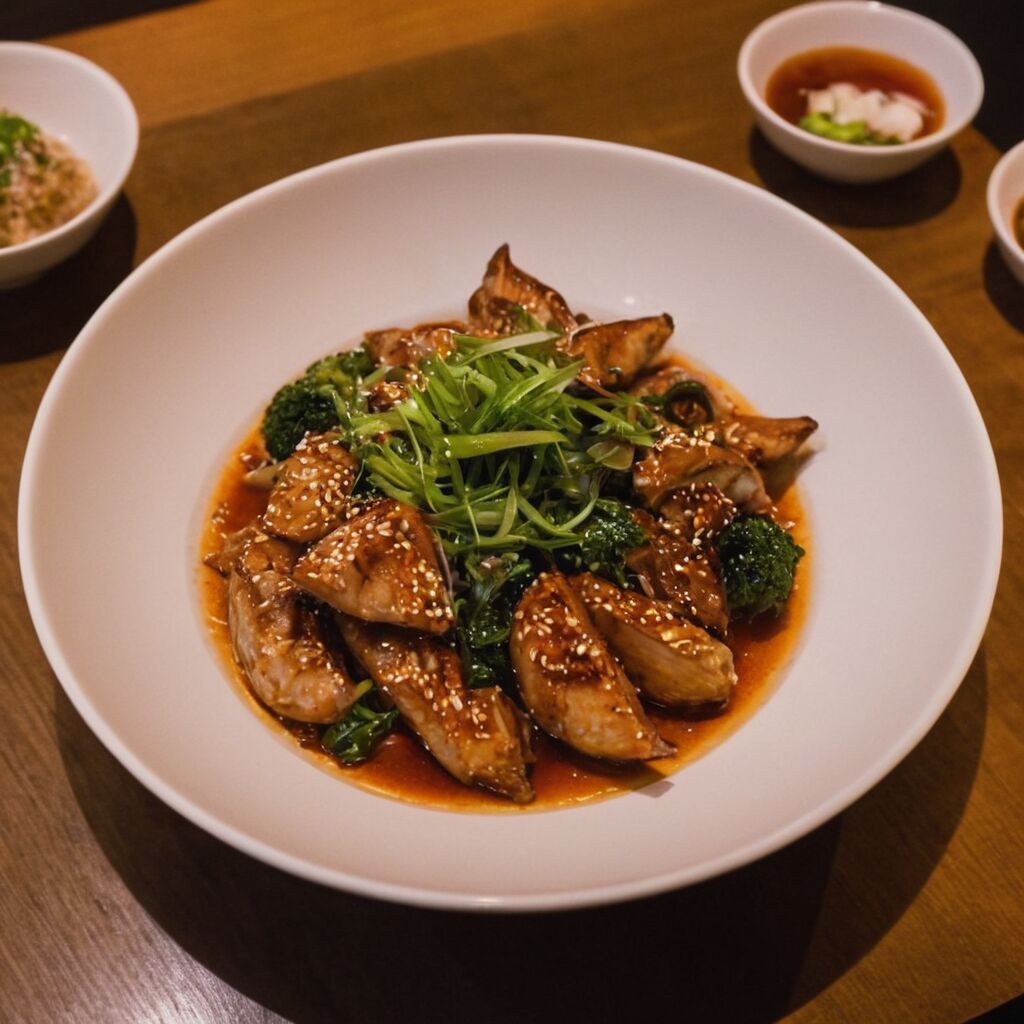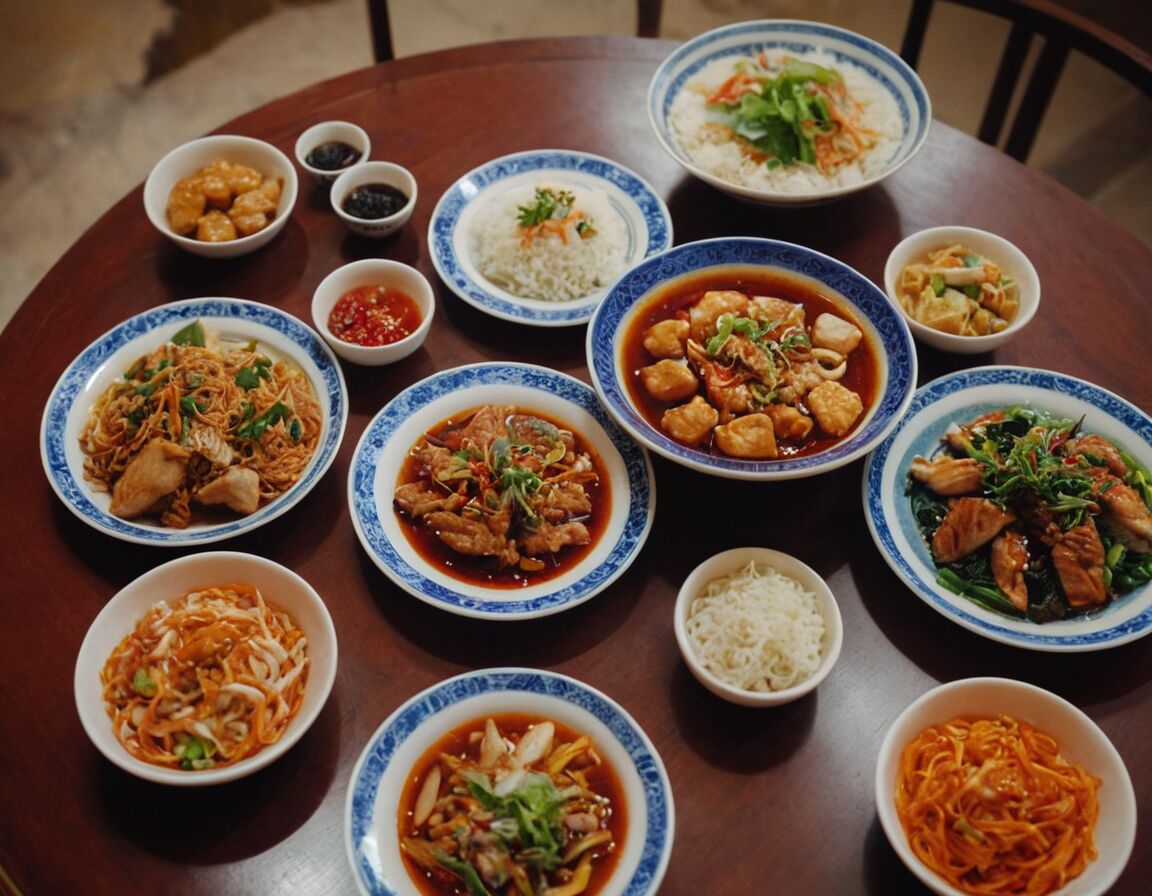The global popularity of Chinese cuisine continues to grow, captivating food enthusiasts across diverse regions. Its rich tradition and bold flavors appeal to an audience eager to explore authentic tastes and innovative interpretations. As a result, traditional dishes are gaining recognition alongside modern fusion creations, reflecting a vibrant culinary landscape. This rising interest is further fueled by the increasing visibility through social media platforms and international dining trends.
Key Takeaways
- Chinese cuisine’s global popularity is rising due to authentic flavors, regional dishes, and social media exposure.
- Fusion dishes blend Chinese flavors with other cuisines, creating innovative and visually appealing culinary experiences.
- Regional specialties offer diverse culinary adventures, reflecting local ingredients, traditions, and cooking techniques.
- Street food culture provides authentic, lively dining experiences and deepens appreciation for Chinese culinary heritage.
- Traditional recipes are modernized with health trends, social media visibility, and culinary innovation, maintaining relevance worldwide.
Popularity of Chinese cuisine continues to grow globally
The popularity of Chinese cuisine continues to expand across the globe, reaching new audiences and increasing in prominence on international dining scenes. Many people are drawn to its bold flavors, diverse ingredients, and unique cooking techniques that distinguish it from other culinary traditions. Restaurants specializing in Chinese dishes can now be found in major cities worldwide, offering a taste of authentic regional specialties and street food favorites.
This growth is supported by the accessibility of Chinese ingredients and the rise of global travel, which encourages appreciation for different cultural expressions through food. As more individuals become interested in exploring new tastes, traditional recipes are often adapted to suit local preferences, fostering a dynamic exchange between culinary heritage and modern innovation. This widespread interest has also been amplified through various media channels, where visually appealing images and videos of Chinese dishes attract curiosity and inspire aspiring cooks.
Furthermore, the expanding availability of Chinese culinary products and the increase in cross-cultural collaborations contribute significantly to this trend. Whether through casual dining or fine gastronomy, Chinese cuisine’s influence continues to spread, solidifying its place as a celebrated and versatile component of global gastronomy.
Interesting article: The Rise of the Wolf Cut: A Trendy Hairstyle Transforming Modern Looks
Fusion dishes combine Chinese flavors with other cuisines

Fusion dishes have become a prominent feature of contemporary Chinese cuisine, blending authentic flavors with culinary influences from other regions. This creative approach allows chefs to experiment and develop innovative interpretations that appeal to a broader audience. For example, integrating Italian pasta techniques with traditional Chinese stir-fries results in unique textures and taste profiles that excite the palate.
These culinary hybrids often incorporate ingredients such as cheese or spices not commonly associated with classic Chinese recipes, adding new layers of complexity. The fusion trend not only enhances the visual appeal of dishes but also introduces consumers to novel flavor combinations, encouraging them to explore beyond conventional borders. As global tastes continue to evolve, restaurants increasingly feature menu items like sushi tacos or Sichuan-style pizzas, which showcase how diverse influences can harmonize seamlessly.
Moreover, fusion dishes foster cultural exchange and dialogue through food, highlighting adaptability and innovation within Chinese culinary traditions. By merging techniques and flavors from various cuisines, cooks create experiences that respect heritage while embracing modern preferences. This blending of culinary worlds exemplifies how tradition can evolve creatively to meet contemporary appetites and expectations.
Regional specialties attract diverse culinary adventures
Regional specialties play a crucial role in enriching the global appreciation of Chinese cuisine. Each region offers distinctive dishes that reflect local ingredients, climate, and cultural traditions, providing food enthusiasts with a diverse culinary adventure. From the spicy flavors of Sichuan to the delicate steamed dim sum of Guangdong, these specialties invite diners to explore authentic tastes rooted in centuries-old practices.
Sampling such dishes allows for an immersive experience into China’s rich culinary landscape. For example, the bold, fiery notes of Sichuan peppercorns create an unforgettable sensory experience, while Yunnan’s mushroom delicacies emphasize earthy tones and freshness. Travelers and food lovers are often drawn by the opportunity to discover new textures or unique flavor combinations exclusive to a particular region.
Furthermore, regional specialties are frequently prepared using traditional techniques that have been passed down through generations. This ensures each dish maintains its unique identity and preserves cultural heritage. As different regions continue to gain international recognition, they inspire chefs worldwide to innovate and adapt these classics, leading to a broader spectrum of cultural exchange within the world of Chinese gastronomy.
Food is the most primitive form of comfort. – Sheila Prophet
Street food culture enhances authentic dining experiences
The street food culture significantly enriches the authentic dining experiences associated with Chinese cuisine. It offers a vibrant and lively atmosphere that allows diners to connect with local traditions and culinary practices in a more immediate way. Street vendors often prepare dishes fresh in front of customers, showcasing traditional techniques and regional flavors that are difficult to replicate in formal restaurant settings.
This informal style of eating fosters a sense of community and shared enjoyment. Visitors can sample a variety of small dishes, each representing different aspects of local or regional specialties. The aroma of grilled skewers, steaming bao buns, or spicy noodles draws crowds and creates sensory memories that last long after the meal. Such experiences also enable people to observe authentic cooking methods, gaining insight into cultural nuances that shape China’s diverse gastronomic landscape.
Furthermore, the affordability of street food makes it accessible to a broad spectrum of people, encouraging exploration beyond mainstream restaurant menus. Whether at bustling night markets or quiet alley stalls, these culinary encounters offer an element of surprise and discovery. This lively aspect of Chinese street food not only deepens appreciation for traditional flavors but also promotes intercultural exchange through food, making it a vital component of the country’s overall culinary identity.
Additional resources: The Evolution of Goku: How Dragon Ball’s Iconic Hero Redefined Anime Culture
| Aspect | Description |
|---|---|
| Global Popularity | The popularity of Chinese cuisine continues to grow worldwide, driven by authentic flavors, regional specialties, and cultural interest. |
| Fusion Dishes | Innovative combinations of Chinese flavors with other cuisines, creating new taste experiences and expanding culinary horizons. |
| Regional Specialties | Distinctive dishes from different Chinese regions, offering diverse culinary adventures rooted in local ingredients and traditions. |
| Street Food Culture | Authentic and lively dining experiences through street vendors preparing traditional dishes in front of customers. |
Traditional recipes gain modern reinterpretations

Traditional Chinese recipes are increasingly being reimagined through modern culinary approaches, leading to innovative dishes that appeal to contemporary tastes. Chefs experiment with presentation styles, ingredient substitutions, and cooking techniques to create reinterpretations that respect heritage while offering a fresh experience. For instance, classic dim sum can now be presented with unique fillings or served alongside fusion sauces, blending tradition with innovation.
These adaptations often involve incorporating health-conscious ingredients such as gluten-free options or reducing sodium content, making traditional flavors more accessible to a broader audience. This trend not only revitalizes old recipes but also demonstrates how cultural food practices can evolve hand in hand with current dietary trends. Such changes are frequently showcased on social media platforms, inspiring chefs and home cooks alike to explore new variations within familiar frameworks.
Ultimately, the modernization of traditional dishes highlights the dynamic nature of Chinese cuisine, which is capable of honoring its roots while embracing creative development. By balancing authenticity with innovation, these reinterpretations keep ancient culinary traditions vibrant and relevant for today’s diverse palates, ensuring that they remain an integral part of global gastronomic conversations.
In-depth insights: The Rise of Bella Ramsey: A New Star in the Entertainment Industry
Social media boosts visibility of Chinese dishes

Social media platforms have played a crucial role in increasing the visibility of Chinese dishes on a global scale. With the shareability of vibrant images and engaging videos, culinary creations from China gain widespread attention and appreciation. Chefs, food enthusiasts, and influencers frequently post visually appealing content that highlights the intricate details and rich colors of traditional and modern dishes alike.
This online exposure encourages more people to explore Chinese cuisine, often inspiring them to try new recipes or visit restaurants specializing in authentic flavors. Platforms like Instagram and TikTok serve as digital showcases for street foods, dim sum, stir-fries, and regional specialties, making these dishes more accessible to audiences far beyond their points of origin. The immediate feedback mechanism provided by social media also fosters a sense of community among food lovers who exchange insights, tips, and personal experiences related to Chinese food.
Additionally, trending hashtags and viral challenges related to Chinese culinary traditions further boost awareness and interest. As a result, dishes that once remained confined to local markets or family kitchens now reach a wider audience, creating a ripple effect that influences restaurant menus and home cooking practices around the world. This synergy between visual storytelling and culinary artistry continues to elevate the reputation of Chinese cuisine and its diverse range of flavors.
Health-conscious trends influence menu modifications
Increasingly, health-conscious trends are shaping menu modifications within Chinese cuisine. Many chefs and restaurant owners are adapting traditional recipes to align with contemporary dietary preferences by reducing sodium content, eliminating artificial additives, and incorporating more nutrient-dense ingredients. These changes aim to make dishes more appealing to a broad audience while maintaining authentic flavors. For example, traditional stir-fries may be prepared using low-sodium soy sauce or natural seasoning blends to enhance taste without excess salt.
Additionally, there is a growing emphasis on gluten-free options and plant-based ingredients, which cater to diverse health considerations. This shift often requires rethinking classic recipes, such as substituting wheat-based elements with rice noodles or offering vegetarian dim sum variations. Chefs are experimenting with alternative cooking oils like olive or avocado oil, known for their healthier profiles, to replace traditional options that may contain trans fats or high saturated fat levels.
The focus on health-driven approaches also extends to presentation and portion size adjustments, ensuring dishes not only satisfy the palate but also support overall well-being. As a result, menus increasingly reflect an integration of tradition and modern nutritional insights, allowing diners to enjoy familiar flavors while adhering to personal health goals. Such adaptations demonstrate how cultural cuisine continues to evolve in response to changing lifestyle trends, without compromising its core identity.
Chinese dining rituals attract international interest
Chinese dining rituals have garnered increasing attention from international audiences, who find their cultural depth both fascinating and enriching. These customs often include specific practices such as the importance of sharing dishes, maintaining proper table manners, and observing traditional toasts, all of which enhance the overall experience of a meal. Visitors frequently express appreciation for how these rituals promote a sense of community and respect among diners, turning an ordinary meal into a meaningful occasion.
Moreover, many people are drawn to the symbolic aspects embedded in Chinese eating habits, like the significance of certain foods during festivals or family gatherings. These traditions serve as a window into China’s history and societal values, making each meal not just sustenance but also an act of cultural preservation. The deliberate sequence of serving dishes and the emphasis on harmony at the table reflect deep-rooted philosophies that resonate with many and contribute to a more mindful approach to sharing food.
As interest continues to grow, restaurants worldwide increasingly incorporate traditional elements into their service standards. This fosters a genuine atmosphere where guests can learn about and appreciate the richness of Chinese culinary etiquette. Overall, these dining approaches offer an authentic and immersive way to experience China’s cultural heritage through food, captivating international audiences seeking a deeper connection with its traditions.
FAQ: Your Questions Answered
What are some common Chinese ingredients used in traditional dishes?
How has Chinese cuisine influenced other global culinary traditions?
Are there specific etiquette rules to follow when dining at a traditional Chinese meal?
What are some popular regional Chinese dishes that are less well known internationally?
How do Chinese chefs incorporate modern dietary trends into traditional recipes?
References:










